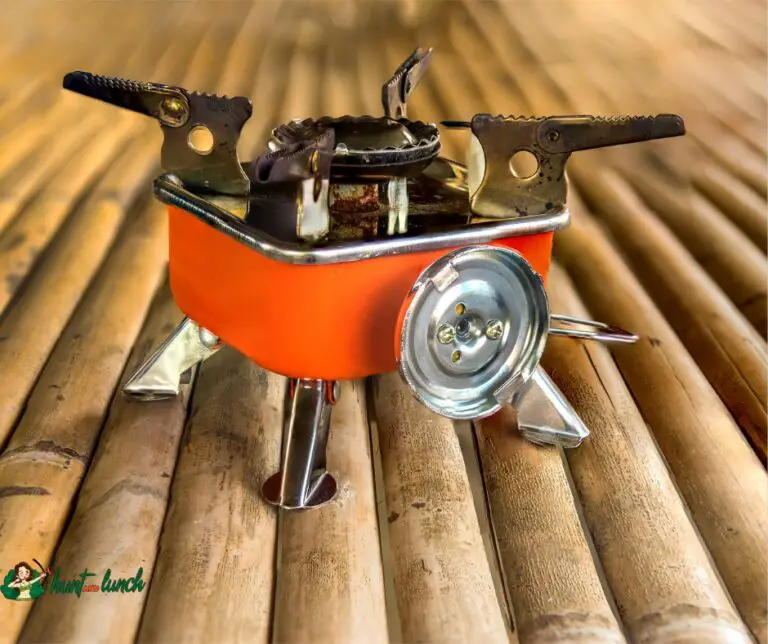
Killing and cleaning a catfish is a common practice before cooking it. Here’s a step-by-step guide on How To Kill And Clean Catfish With Ease:
Materials You’ll Need:
- Catfish
- Sharp fillet knife
- Cutting board
- Pliers (optional)
- Bucket of ice water
- Fish scaler or spoon (optional)
- Gloves (optional)
Steps to Follow:
1. Prepare Your Workspace:
- Set up a clean and well-lit workspace with your cutting board and fillet knife ready.
2. Safety Precautions:
- Wear gloves if desired, as catfish can be slippery. Ensure your workspace is stable to prevent accidents.
3. Stun or Kill the Catfish:
There are several humane methods to stun or kill a catfish before cleaning:
- a. Spiking Method: Insert a sharp knife or ice pick into the catfish’s brain, located slightly above and behind the eyes. This method is quick and humane.
- b. Chop Off the Head: A swift blow to the head with a blunt object will instantly kill the catfish. Some prefer this method for larger fish.
- c. Ice Water Method: Place the catfish in a bucket of ice water for several minutes until it becomes unconscious. Ensure the water is cold to minimize stress to the fish.
4. Scale the Catfish (Optional):
- Use a fish scaler or the edge of a spoon to remove the scales from the catfish. Start at the tail and work your way towards the head. This step is optional, as some prefer to cook catfish with the skin on.
5. Remove the Fins:
- Using your fillet knife, carefully cut off the dorsal (top) and pectoral (side) fins. Dispose of these properly.
6. Slit the Belly:
- Lay the catfish on its side. Starting at the anus and moving towards the head, make a shallow slit along the belly, being careful not to puncture the internal organs.
7. Gut the Catfish:
- Reach into the slit and remove the internal organs, including the guts, stomach, and intestines. Dispose of them properly. Some people prefer to wear gloves for this step.
8. Rinse and Chill:
- Rinse the catfish thoroughly inside and out with cold water to remove any residual blood or organs.
- Place the cleaned catfish in a bucket of ice water to keep it fresh until you’re ready to cook it.
9. Fillet or Cook Whole:
- Depending on your preference and the recipe you plan to use, you can either fillet the catfish or cook it whole. To fillet, use your fillet knife to separate the flesh from the bone along the spine.
10. Cooking:
You can now cook your catfish using your favorite recipe. Popular cooking methods include frying, grilling, baking, or poaching.
Remember that safety and humane treatment of the catfish are essential throughout the process. Following these steps will help you prepare a fresh and delicious catfish meal with ease.
Pros and Cons of Killing A Catfish Before Cleaning
Killing a catfish before cleaning is a common practice in many culinary traditions. However, like any food preparation method, it comes with its own set of pros and cons:
Pros:
- Humane Treatment: Killing a catfish before cleaning is considered a more humane practice as it ensures the fish doesn’t suffer during the cleaning process. This is often seen as a more ethical approach to food preparation.
- Safety: A catfish that is no longer alive is less likely to exhibit reflex movements that can be dangerous during the cleaning process. It reduces the risk of accidental injury to the person cleaning the fish.
- Quality: Killing a catfish before cleaning can lead to better meat quality. When a fish is stressed or panicked, it can release adrenaline, which can affect the taste and texture of the meat. Killing the fish quickly can result in better-tasting and more tender meat.
Cons:
- Skill Required: Killing a catfish properly requires some skill and experience. If not done correctly, it can be less humane and even stressful for the fish.
- Time and Convenience: Killing a catfish adds an extra step to the cleaning process, which can be seen as less convenient, especially for those who are not experienced in fish preparation.
- Ethical Concerns: Some individuals may have ethical concerns about killing an animal for food, even if it’s a common practice in many cultures. This can be a personal or cultural perspective.
- Freshness: Killing a catfish too far in advance of cleaning can lead to the meat deteriorating faster. It’s best to kill the catfish shortly before you plan to clean and cook it.
Some related FAQs about killing and cleaning catfish:
Why is it necessary to kill a catfish before cleaning it?
Killing a catfish before cleaning it is humane and ensures that the fish doesn’t suffer during the cleaning process.
What is the best method for stunning or killing a catfish quickly and humanely?
The spiking method, where you insert a sharp knife or ice pick into the catfish’s brain, is considered one of the quickest and most humane ways to stun or kill a catfish.
Can I scale a catfish after it’s been killed and cleaned?
Yes, you can scale a catfish after it’s been killed and cleaned, but it’s often easier to scale it before gutting and cleaning it.
What do I do with the internal organs and guts of the catfish after cleaning?
Dispose of the internal organs and guts properly, either by burying them in the garden, feeding them to animals, or placing them in a compost bin.
Is it safe to eat the skin of a catfish?
Yes, the skin of a catfish is edible and can be left on when cooking if desired. However, it can be tough, so some prefer to remove it before cooking.
Are there any special considerations when cleaning larger catfish?
Cleaning larger catfish is similar to cleaning smaller ones, but you may need larger tools and a bit more effort. Ensure you have a sharp fillet knife and a stable workspace.
How do I store catfish after it’s been cleaned?
Store cleaned catfish in a sealed container or plastic bag in the refrigerator or on ice to keep it fresh until you’re ready to cook it.
Can I clean and gut a catfish without cutting off the head?
Yes, it’s possible to clean and gut a catfish without cutting off the head. Simply make a shallow slit along the belly and remove the internal organs.
What is the best way to cook catfish?
Catfish can be cooked in various ways, including frying, grilling, baking, or poaching. The best method depends on your taste preferences and the recipe you’re using.
How can I ensure that my catfish is safe to eat after cleaning?
Ensure that your catfish is fresh, properly cleaned, and stored at a safe temperature (refrigerated or on ice) to prevent spoilage. Cook it thoroughly to an internal temperature of at least 145°F (63°C) to ensure it’s safe to eat.
1. What’s The Fastest Way To Clean Catfish?
The fastest way to clean catfish is to use the spiking method, where you insert a sharp knife or ice pick into the catfish’s brain. This method quickly stuns or kills the catfish, making the cleaning process faster.
2. How Do You Cut A Catfish Head?
To cut off a catfish’s head, use a sharp fillet knife. Place the knife behind the head, and with a swift motion, cut through the spine just behind the gills.
3. Can I Use Lemon To Wash Catfish?
Lemon can be used to wash catfish as it helps remove any fishy odor and adds a fresh citrus scent. Simply rub lemon juice on the catfish before cleaning.
4. How Do You Clean And Wash Catfish?
Cleaning and washing catfish involves removing the scales, gutting, and rinsing. See the detailed steps in a previous response for a complete guide.
5. Should You Bleed Catfish Before Cleaning?
Bleeding catfish before cleaning is optional but can improve the taste and quality of the meat. To bleed, make a small cut at the base of the catfish’s tail and let it bleed out for a few minutes before cleaning.
6. Does Boiling Water Remove Catfish Skin?
Boiling water can help loosen catfish skin, making it easier to remove, but it won’t completely remove the skin. You’ll still need to peel or cut it off after boiling.
7. What Does Salt Do To Catfish?
Salt can be used to season catfish and enhance its flavor when cooking. It can also help remove excess moisture from the catfish skin, making it crispier when fried.
8. Are Catfish Good To Eat?
Yes, catfish are popular for their mild flavor and firm texture. They are considered good to eat and are commonly used in various culinary dishes.
9. Should I Soak Catfish In Water?
Soaking catfish in water is not necessary before cooking unless you’re planning to brine or marinate it. Otherwise, simply rinse the catfish before cooking.
10. Why Do You Soak Catfish In Milk? – Soaking catfish in milk is a common method used to remove any strong, fishy odors and flavors. The milk helps neutralize and tenderize the catfish meat.
11. Should You Soak Catfish In Salt Water? – Soaking catfish in salt water is another method used to reduce fishy odors and flavors. It can also help season the fish. Use a brine solution with salt, water, and any desired seasonings for this purpose.
12. What Is The Best Method For Catfish Fishing? – The best method for catfish fishing depends on factors like your location and personal preferences. Common methods include bait fishing, using live bait or stink bait, and bottom fishing. The choice of bait and fishing equipment also plays a role in successful catfish fishing.
These FAQs provide additional information and guidance for those interested in cleaning, cooking, and enjoying catfish as part of their culinary experience.




![How Much FPS To Kill A Deer? [Firearm and Crossbow]](https://huntandlunch.com/wp-content/uploads/2023/09/4-2-768x768.jpg)

